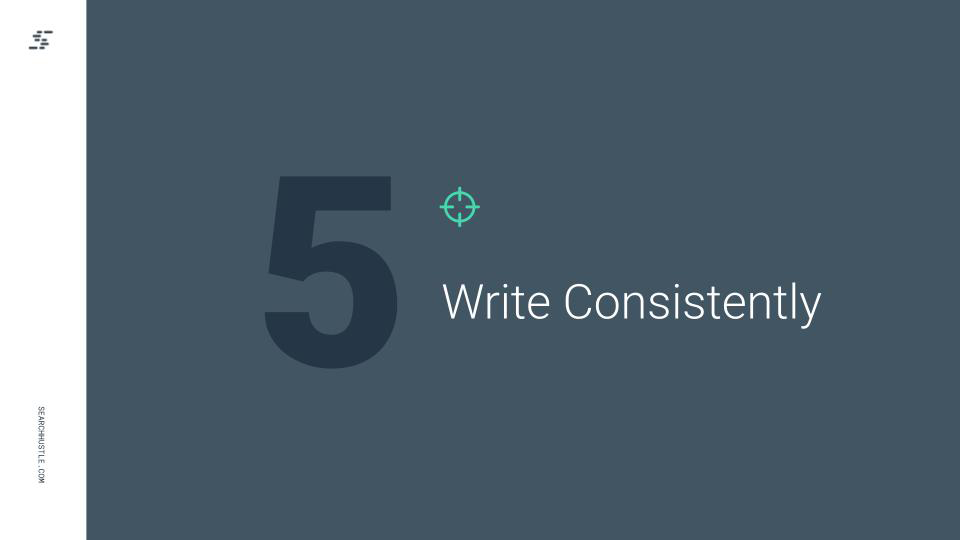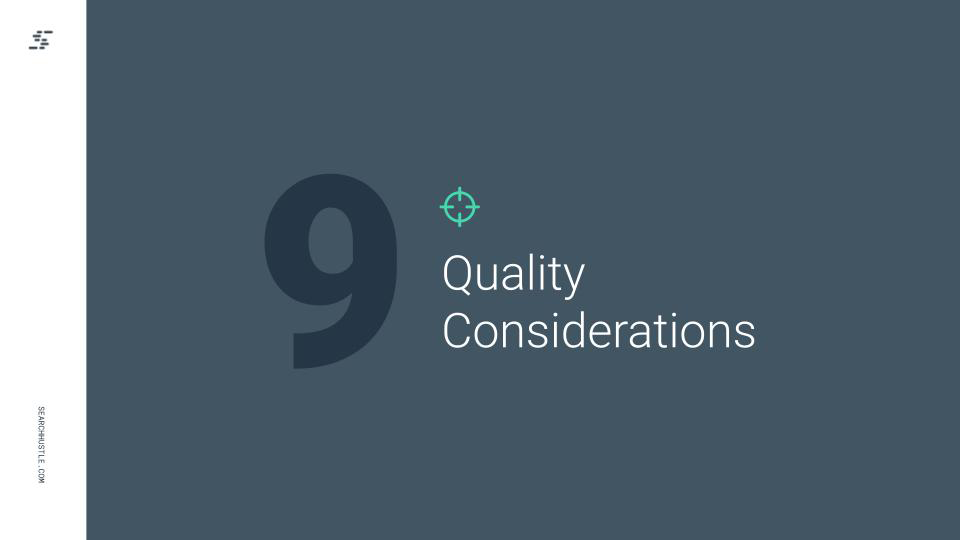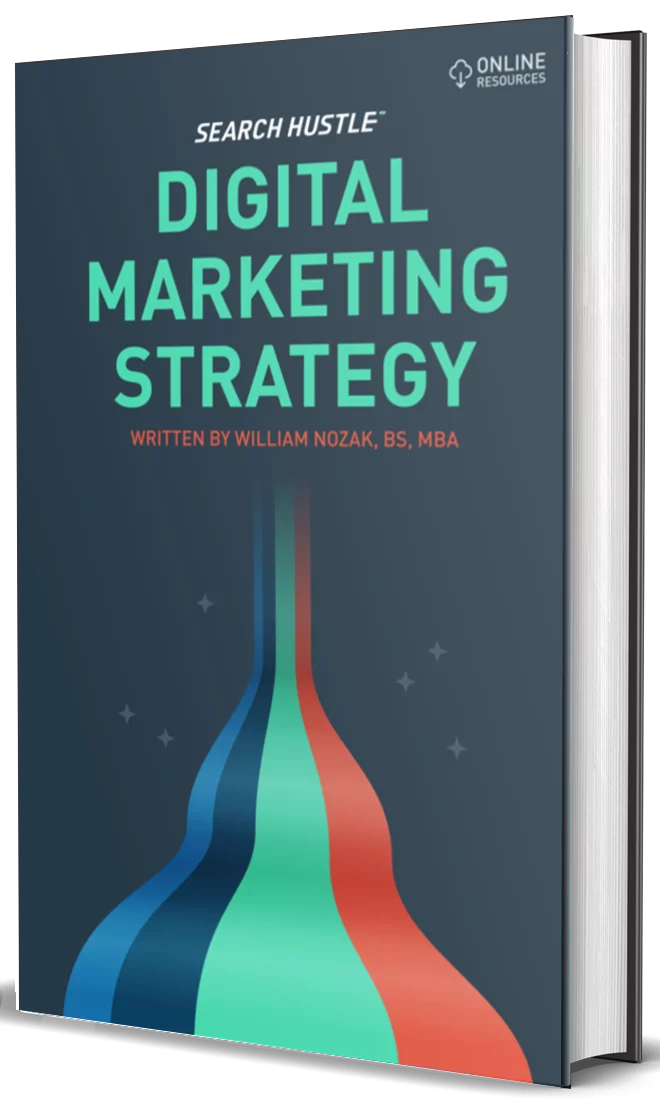Write SEO Content
Learn all about how to write SEO content with Search Hustle.

In the world of digital marketing and SEO, content is king. That’s an expression everyone hears over and over again, but how do you write SEO friendly content? Beyond simply writing a basic, intelligible article, here are some things to keep in mind when writing optimized SEO content.
Good SEO Content Principles
In seeking to improve on page SEO and produce content to enhance the SERP score, consider the best practices for SEO content. While learning about the other areas of SEO is important, content is what truly drives a website from the bottom to the top. Here are the practices that need to be incorporated into the content creation process.

1. Write for Your Audience
While this may seem obvious, a lot of people make big mistakes when it comes to writing for their audience. Content should address questions, concerns, or intricacies of the industry that a business is involved in. That doesn’t mean every article should be about what the business offers. Remember that one of a search engine’s top priorities is search intent and providing content that answers search queries.
This is one way in which a company can present itself in a positive, empowered light. Don’t be afraid to assert authority and topical leadership. The content should propel a company to a point of industry-leading authority, not just about products and services.
Informative articles that take into consideration the knowledge base of the target audience will often be successful. This is because people who are into or looking for something are often eager to learn more about it. It also makes a company look better to provide information beyond products and services.
Do not overcomplicate the subject matter, or make it too abstract. Unless you are in a niche field, you don’t want to sound smart, you want your audience to feel smarter after reading your content. Convey your thoughts as clearly and concisely as possible.

2. The Title Matters
Content can be informative and authoritative, but a bad title can ruin the chances it will be looked at. Not only should you find a title that sounds and looks good, but there are additional concerns. Keywords should be included, at least 1 or 2 frequently searched for terms relating to the field in question.
Much like headline writers learned when newspapers began to be popular, a proper headline is a make-or-break issue. Make sure that the headline is engaging, and immediately sparks interest. Avoid bland terminology or vagueness in the headline.
Headlines also count when you’re dealing with subject headers. The title of each section of your content should be treated as a separate title but it should also support the overall article title for your content. This means making sure that each section has a header that captures the attention of the reader, and pulls them through the content.
A good general rule is to have a title that draws them in, section headers that keep them going, and a conclusion that sums it up. This way the entire experience of your viewer is improved and managed.

3. Keep Your Content Together
Keep the content under the domain used by your company, such as www. mycompany .com/blog. If your article is featured on another website, ensure that they provide a rel-canonical link back to your original article on your site. This will prevent views from being drawn off and credited to other domain names and sites.
This is also true for any additional content that is created, whether it is an infographic or audio/visual content. Everything that is original should be published together on the website that represents the business. This is the only way to ensure that the views and clicks are being properly accounted for.
It is true that you want some content to be picked up by other sites, and relaying it in this way can spread your impact. In these cases, make sure that the hosting for your images and content is all done via your website. If someone searches for more of your content or one of your images, it will direct them back to your site.

4. Using Keywords
Keywords are of vital importance if an article is to contribute to the SERP placement of a website. The way they are used is also very important. Don’t simply plug in keywords, make sure that they fit the content, and try to expand them by using keyword phrases instead of individual words.
This can look different, depending on what industry the content is being created for. Research will be required in order to determine what the most common phraseology being used by web searchers is. Once you know, make sure that the content being created harnesses these phrases.
Keywords should also be used in the very first section of a piece of content. Within the first paragraph, usually in the first sentence or two. Don’t let hundreds of characters pile up before using a keyword or keyword phrase. Make sure there are keywords used in the headers as well as the conclusion.
The general rule is to make sure that you don’t overstuff keywords which can lead to penalties. Use them with strategic intent, drawing focus to the article without it sounding harsh or unnatural.

5. Write Consistently
A huge part of establishing good, quality content is consistent writing. One of the best ways to be consistent is to put effort into good, well-thought-out outlines. Use phrasing and terminology that is appropriate and effective.
If you generate a lot of content, make sure that there is consistency between the other pieces of content. Don’t experiment with different formatting each time an article is written. Reading a piece of content from a trusted site is often a pleasant experience, the reader knows what to expect.
One way to coordinate the consistency between multiple authors is to have straightforward requirements. Establish how often you want keywords used, how you want titles to sound, and review everything submitted. Make sure that everyone involved in the process, from yourself to others, fully understands your requirements.

6. Formatting and Structure
It is easy to forget how important structure is when creating content. Human brains are designed to key into organized information in a way that makes it more impactful. Even the best, most informative content will get lost if it is presented in a disorganized or confusing manner.
One of the best ways to optimize your content for SEO is to streamline the paragraphs. Use short, concise sentences and paragraphs that don’t contain more than 3 or 4 sentences each. This will keep the information split up, easy to digest, and pleasant to read.
Any content should also take advantage of the technical organization as well. Make sure that sections are tagged and that the appropriate tag is used. Title for title, headline 1 for overall subjects, headline 2 for breaking it into smaller units, etc. This will make the piece easy to read and understand for both people and the algorithm.
The beauty of proper formatting is that it satisfies so many qualifications. From having easily read and digested information to looking more professional. It may be surprising to some how much the organization of an article can impact the appeal of it.

7. Use Images
The old adage that a picture is worth a thousand words is also true when generating unique, original content. Using imagery to help relate a point, provide context, or even draw views can be a great benefit to content. Many viewers can be drawn in by the right image alone.
Special care must be taken to ensure that the imagery used is appropriate and relatable to the content. Just any old picture won’t do, it has to be something that makes the mind of your reader more attuned to what they are reading. Consider infographics and graphs as a great visual enhancement.
Image Optimization
Original images can be optimized by ensuring that file names are used which apply directly to the content on your page. Make sure you set Alt text that matches your title when you add your image as well. File size is also very important, as large images can slow down your page load times and provide a poor user experience. We recommend converting your images to a WebP format to provide an optimal file size. We also recommend not exceeding a file size of 100kb for each image that you add to a page.

8. Build Up Links
Having links inside the content is essential. Even if your piece is picked up by another site and published, having those links will bring eyes back to your website. Also, producing high-quality content that is linked to by others is a great way to build the topical authority of the content and website.
Gone are the days when you could simply purchase tons of links and those would have the desired effect. The algorithm today distinguishes between pointless links and those to trusted, authoritative sources. This is also a great way to network your content with other, trusted sources of content.
It is also important to distinguish between and take advantage of both internal and external links. While internal links will bring eyes and clicks to the website in general, good external links help to network topical authority. Only link to sources that can help add legitimacy to the content.
Try to focus on using at least two internal and external links per thousand words of content. This way you will have a high degree of link building without succumbing to link stuffing. The goal is to create content that is interesting, authoritative, and able to be linked by others.

9. Quality Considerations
A lot has been said about quality content, but what does that mean in context with SEO content? There are certain areas of quality that must be taken into consideration when considering SEO content creation. These are spelling, grammar, and readability.
Spelling is obvious, you don’t want to publish content that contains spelling errors. This makes it vital to carefully edit the content you receive, have generated, or create yourself. There are many tools that can be employed, from a standard spell checker to more advanced options.
Grammar has become increasingly important and is often harshly critiqued by viewers. Proper grammar helps by not jarring readers and making the voice of the writing in the content consistent. There are many tools for grammar, many word processors use basic grammar checking, but other more in-depth options like Grammarly exist.
Readability is the ability of the average reader or consumer of your content to comprehend and enjoy what they are reading. This can be industry-specific, but in general, you want to use short paragraphs, easy-to-grasp sentences, and simple structure.
How Do I Produce The Best SEO Content?
By creating your SEO recipe which should include 1. writing for the audience, 2. picking a purposeful title, 3. using concise language & content that is in scope of the page, 4. understanding what keywords you are targeting, 5. make sure the content is quality, 6. make sure the format makes sense for users and bots, 7. capitalize on the use of purposeful images, 8. share your content in order to gain links, 9. and finally incorporate feedback.
Remember to always take into consideration what the average viewer wants, can understand, and needs. Addressing these core considerations will make a regular piece of content become extraordinary.
Elevate the writing and production of content to its rightful spot. If content is king, then making sure that your content is optimized for SEO is the only way to do it justice. Consistent adherence to the principles of SEO content is a proven way to outperform your competition.

Ready to Take Your Search Hustle Further?



